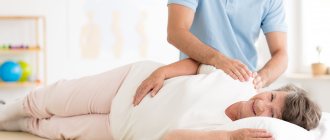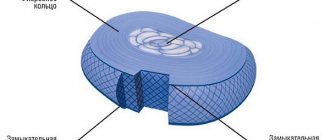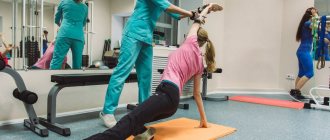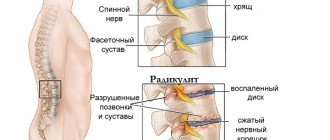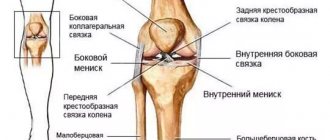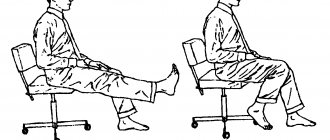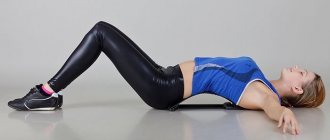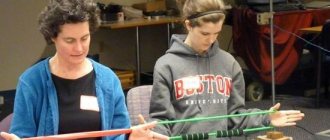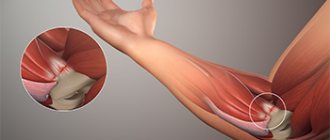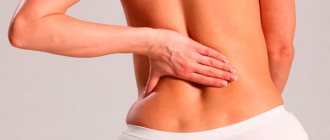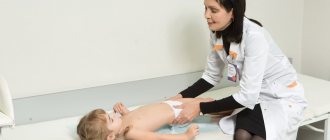Exercise therapy for children with poor posture is one of the most effective ways to restore back health without the use of radical techniques. They recommend sets of exercises for teenagers, schoolchildren and preschoolers to prevent the development of scoliosis or other problems with the spine. Exercise therapy has already become a necessary activity, since modern children spend more and more time near computers, do not play sports, and are overweight. While physical development affects not only the beauty of the figure, but also the health of internal organs.
The influence of physical education on posture
In preschool children, the skeleton develops rapidly, but the muscles do not change so quickly. Until the age of 6-7 years, children stretch out and appear tall and slender. But lack of muscle mass causes the formation of irregular curves in the ridge. Their main problems with posture are:
- Scoliosis.
- Slouch.
- Round back.
- Flat spine.
- Lordosis.
- Kyphosis.
Lack of correct posture in children causes problems with the functioning of internal organs, a decrease in the volume of respiratory movements, and pathologies of the cardiovascular system. To prevent this from happening, starting from the 3rd year of life, it is necessary to take care of the formation of a strong muscle corset. It is this that maintains the flexible bone organ in the correct position, allowing you to easily perform squats or bends, jumping, running and other actions.
Therapeutic gymnastics is a comprehensive method of preventive measures that allows you to treat any postural disorders. It consists of specially designed exercises aimed at strengthening the back and all-round development of the body. The main goal of training is to minimize the negative consequences of injuries or a passive lifestyle, correct posture, harden the body as a whole, and restore muscle tone. Regular exercise by the child will allow the parent to be confident in the correct development and growth of the child.
Any curvature of spinal posture is the basis for exercise therapy
Exercises to prevent scoliosis in children
Sometimes it happens that prevention turns out to be more effective than a course aimed at treating an existing pathology . If you notice that your child has a tendency to deform the spine: he sits unevenly, spends a lot of time at a table or desk, or hunches over, it is still worth carrying out preventive physical exercises that will reduce the risk of scoliosis.
If you already do morning exercises with your child, then add exercise therapy to your routine exercise routine.
There are no special exercises aimed specifically at preventing the development of the disease. As a preventive measure, a basic complex of physical therapy is used , described in the previous paragraph. Please also note that in addition to performing basic exercises, you need to carefully monitor how your child sits at the table and how the lighting in his workplace is chosen.
Several basic exercises to prevent scoliosis in a child
Buy furniture for his room that will be suitable for his height and age, buy a backpack with a special orthopedic back. Well, the standard advice: be sure to walk with your child in the fresh air, and do it as often as possible and in any weather.
If you follow all preventive conditions, the risk of scoliosis in your baby will be minimized. Believe me, he will thank you when he grows up.
Indications for exercise therapy and contraindications
Lack of correct posture in children is the main indication for prescribing therapeutic exercises. Physical therapy stabilizes the muscles of the trunk, corrects the disorder, and returns the spine to its normal shape. Exercise therapy is necessary in the following cases:
How to wear a posture corrector
- Slouch.
- Rounded back.
- Flat back.
- Flat chest.
- Shoulder blades protruded in different directions.
- Pronounced lordosis of the lower back.
- Kyphosis of the thoracic region.
- Cervical lordosis.
Physical therapy is prescribed in combination with nutritional correction, walks in the parks and taking multivitamins. In especially severe cases, wearing a special bandage is recommended. The advantage of this technique is the almost complete absence of contraindications. The doctor prescribes a set of exercises individually, taking into account the complexity of the curvature and the child’s general physical fitness. If there is acute pain or an exacerbation phase of chronic diseases, training is postponed until health stabilizes. The reason to completely abandon exercise therapy is increased body temperature, rapidly progressing spinal deformity and infectious processes in tissues.
No ads 1
Common deformities of the spine and feet in childhood
Doctors most often diagnose children with right- or left-sided curvature of the spine and flat feet.
Scoliosis or lateral curvature of the spine begins to form from early school age, when the child is actively growing.
The shape of the curvature is C- and S-shaped. Depending on the angle of deviation of the spine (Cobb angle), 4 degrees of severity are distinguished.
Complications: - decreased muscle tone; - change in the shape of the chest; - deterioration of lung function; - amyotrophy; — chronic diseases of the respiratory, cardiovascular, digestive systems; - infertility; - mental disorders due to persistent depression.
Flat feet or flattened feet are characterized by drooping of the longitudinal and/or transverse arch. Develops as a result of weakness of the muscles and ligaments of the lower extremities, wearing the wrong shoes.
A child's foot is shorter and wider than an adult's, with a pronounced layer of subcutaneous fatty tissue. This visually makes a normal foot flat, so only a specialist can make a correct diagnosis based on examination, podoscopy and radiography.
Complications: - pathological posture; - pain in the legs; - fast fatiguability; - gait disturbances; - deformation of the knee joints and toes; - ingrown toenails.
Rules for conducting classes
After determining the nature of the pathology and the nature of the postural deformation, the physiotherapist prescribes a suitable set of exercises. It is formed taking into account the need for the degree of impact on existing curvatures. They can be carried out in a gym, a specially equipped gym or at home. It is important to make sure that the child is comfortable during the process, that he is wearing comfortable, breathable clothing, that there are no stress factors and that he is feeling normal.
You should also follow these simple rules:
- Do not feed your child 2 hours before training.
- Take a bottle of clean water with you and give it in small sips as you practice.
- During the period of correctional therapy, strictly monitor the diet, balance it with the required amount of proteins, carbohydrates, vitamins, based on age needs.
- Conduct training only in a well-ventilated area with a temperature not exceeding 20C.
- During the process, it is important to teach the child to monitor breathing and report if pain or severe discomfort occurs.
- All gymnastics performed for therapeutic purposes must be carried out in compliance with strict technology (shoulders straightened, chin raised, back straight).
- There should be no jerks, intense actions, or holding your breath during the process. Everything is done carefully and smoothly, the complexity of the training increases gradually.
- Late evening training is prohibited.
- Training should be systematic, carried out regularly, with equal time intervals between them.
It is strictly prohibited to independently adjust the selected exercises, complicate them, or increase the load without consulting a specialist. This will not only not speed up the appearance of the result, but will also lead to more serious curvatures. The first classes are necessarily carried out together with a physiotherapist; after mastering key techniques, you are allowed to conduct them independently at home.
All exercises are carried out only in a well-ventilated area
A set of exercises for children of different ages
Exercises to correct posture in children are performed on a sports mat appropriate for the child’s age. When working with preschoolers, it is important to arouse the child’s interest, since he will not understand why certain actions are needed. An excellent solution would be a game form or participation in the process of his favorite characters, cartoon characters. For each age, the complex will consist of its own exercises.
[node:field_similarlink]
Training for children from 3 to 5 years old
If posture is impaired in childhood, the child is prescribed simple exercises, with elements of a therapeutic effect on the problem. Rotational tilts of the head, “Cat”, bends to the sides, twists in different directions, and bends of the torso forward will be useful. Physical education to correct posture may also include the following approaches:
- Take the ball in your hand, raise it high above your head, transfer it to your other hand and lower both of them.
- Lie on your back. Raise your legs above the floor and imitate riding a bicycle.
- Raise the stick above your head, look at it as you do, and lower it to your chest. Return to starting position.
For a preschool child, 3-5 repetitions will be enough. The training consists of simple exercises that can easily be turned into a game. During the process, it is important for the parent to control the baby’s posture and the intensity of the actions. There should be no jerking, jumping or force loading.
Incorrect position at a desk is the main cause of spinal curvature
No ads 2
Classes for children 6-10 years old
At this age, children need to be taught physical education as an integral part of the existence of a modern person. This will not only help him develop good posture and overcome back problems, but will also introduce him to sports, improve his quality of life, strengthen his immune system, and increase endurance. Posture correction training will consist of the following exercises:
- Walking in place for 10-15 minutes as a warm-up.
- Straight back position, feet shoulder width apart. The arms rise up, the torso stretches. As you exhale, the limbs lower. 5-6 approaches. There should be no arching in the lower back during execution.
- Lie on your back. Extend your arms along your body. Raise your left limb and at the same time pull your leg towards your stomach. Repeat the same with the other side. After 5 approaches. At the same moment, raise your arms and pull your legs towards your stomach.
- Get into the starting position, raise your shoulders. Take turns imitating punches, like boxers do. There should be 5-6 approaches for each hand.
- Lie on your stomach, arms extended along your body. As you inhale, lift them up, as you exhale, lower them.
At ten years old, the child is already old enough to understand why these exercises are done, but for variety, some training can be done in a playful way. During classes, the parent is obliged to monitor their posture so that there is no arching in the lower back or drooping shoulders. For the entire complex, it is also important to perform about 10-15 squats, keeping your shoulders straight.
Regular exercises give lasting results and allow you to return the spine to its normal position
Correction methods
With the help of therapeutic physical exercises, you can strengthen muscles and correct curvature of the spine and flattening of the foot.
Exercise therapy for scoliosis
— You cannot do therapeutic exercises without consulting a doctor. — Physical education classes should exclude any exercises that cause swaying of the spine: somersaults, pull-up jumps, etc. — Before sending your child to any sports section, consult your doctor to see if he can participate in this sport. — Depending on which part of the spine the curvature is in, its shape and severity, whether it is right- or left-sided, the exercise therapy doctor selects the appropriate exercises.
The type of posture of a child may be a contraindication to playing sports. At the Quality of Life clinic, doctors will diagnose your child’s posture and give recommendations on which sports he can engage in and which ones he cannot.
Physical therapy classes for scoliosis, depending on the degree of its severity, can be supplemented by wearing a special corset.
Exercise therapy for flattening feet
— Depending on which arch of the foot is flattened, the doctor selects certain exercises. — Exercises with walking on massage mats have a good therapeutic effect. — Classes are aimed at correct distribution of the load on the foot and correction of gait. — In some cases, classes may be needed to correct excess weight.
In addition to exercise therapy, the following have proven themselves to be effective in correcting postural disorders and foot deformities:
Massotherapy. Soft manual techniques. PNF proprioceptive guidance methods. Exercises on the RedCord hanging rig. SEAS Gymnastics. Wearing custom-fitted orthopedic insoles. Kinesiological taping.
Doctors at the Quality of Life clinic are proficient in these techniques and will select a treatment complex for each child. And for the youngest patients there is a specialist who knows the Bobath and Vojta therapy techniques, and even comes to your home.
Physical therapy exercises strengthen muscles, reduce the load on the spine, develop its flexibility, form correct posture, improve lung ventilation and reduce the risk of severe health complications. But only a doctor can select the necessary exercises after examining the child, taking into account the individual characteristics of his body and disease.
Similar articles:
- Directions
- Specialists
- For visitors
- Articles and videos
“Healthy Summer” 1000 rubles discount on an appointment with osteopathic doctor E.A. Ukhmylin.
Adult admission 6 thousand, children admission 5 thousand.
Gymnastics for scoliosis
Pathological curvature of posture is the most difficult to correct, since the displacement of the vertebrae is accompanied by deformation processes. Therefore, physical therapy is prescribed for a long period of time, almost always performed while wearing a corset and taking special medications. Training is usually based on the following exercises:
- Lie on your back and raise your legs up, doing rotations reminiscent of riding a bicycle.
- Stand straight, feet shoulder-width apart, hands on your waist. As you exhale, lift your leg up, bending at the knee. Try to pull it towards your stomach as much as possible.
- Fix your shoulder blades with a gymnastic stick, grab its ends with your hands and lean forward.
The number of repetitions is determined by the doctor, based on the age and severity of the curvature. There should be no pain or excessive effort during the process, otherwise the situation can greatly aggravate.
No ads 3
Exercises with gymnastic instruments
School-age children will find it more interesting to engage in physical education with sports equipment. Special equipment increases the benefits of exercise. For posture problems, physiotherapists recommend using a fitball. It is indicated both in the early stages and in cases of serious development of pathology. It is selected according to the child’s height; for children up to 1 meter, a product with a diameter of 45 cm is purchased, and for children under half a meter, 55 cm in height. Before starting training, you need to do simple exercises to warm up the muscles. You need to start with simple actions, gradually increasing the load and complexity.
The following exercises will be of great benefit:
- The child needs to sit on the ball, spread his arms to the sides and raise them above his head in three stages, and then return them to the starting point.
- Sit on the ball, lower one hand, raise the other above your head. Spring them, moving them as far back as possible. On the count of three, change the position of your hands to the opposite.
- Lie on the fitball with your stomach, find support in your feet and hands. On the count of three, raise your arms to your shoulders, keeping your arms, head and neck at the same level.
Physical education for children of preschool age and older is key. It is a powerful prevention of the development of pathologies of the musculoskeletal system. Regular exercises will eliminate curvatures, strengthen the muscle frame, and normalize metabolic processes.
Many children find it more interesting to exercise on a fitball
Preventive actions
School-age children are at risk of developing scoliosis, so they are most often shown to specialists to determine the condition of their spine. To prevent curvature, parents are advised to take seriously the organization of the child’s workplace and choose an orthopedic mattress. In addition, as preventive measures you should follow simple rules:
- Regulate rest and physical activity, give the child the opportunity to play and move more.
- Don’t rush to teach your baby to sit or walk, give these skills the opportunity to develop on their own.
- Avoid using low quality backpacks with thin straps.
- Monitor the position of the child’s back while doing homework.
- Do not sit at the computer for more than 15-20 minutes unless necessary.
- Do simple exercises every morning.
As the child grows up, it is necessary to choose a suitable sports section for him, where he will strengthen the muscular corset of the back and thereby prevent the appearance of deformities.
Physical therapy for children with crooked posture is an excellent way to combat the problem. But it must be performed regularly under the supervision of a doctor, in which case the result will not be long in coming. Training at home is allowed only when the parent has mastered all the rules and is able to control the child’s technique of performing the exercises.
Features of children's physical therapy: objectives, effects, principles
Today, children from an early age prefer gadgets and television to active games and learning about the world around them. Their parents also contribute to this - so that the child does not interfere where he shouldn’t, he is occupied with playing on a smartphone or watching a cartoon. As a result, the child moves little.
Without adequate motor activity, diseases of the internal organs (nervous system, heart, lungs) and disorders of the musculoskeletal system (posture disorders, foot deformities) develop from an early age. These conditions become chronic and lead to retardation in physical development.
Lack of physical exercise contributes to a decrease in the vital functions of a growing body: blood circulation, air exchange in the lungs, the functioning of the digestive organs and nervous system, which leads to a deterioration in the general condition.
Pathology of the musculoskeletal system in children is manifested by muscle weakness, poor posture, decreased motor functions and flat feet. It gets worse with age and leads to diseases:
— nervous system: vegetative-vascular dystonia, depressive states, myofascial syndromes; - heart and blood vessels: coronary disease, hypertension; — metabolism: obesity, diabetes; - respiratory and digestive organs, etc.
Exercise therapy is a science that uses physical exercise, psychology and pedagogy for therapeutic purposes. Doctors at the Quality of Life clinic use its methods to treat and restore children, starting from infancy.
Objectives of therapeutic physical exercises:
- treatment of diseases; — prevention of their exacerbations; - recovery from injuries; — development of activity and endurance; — health promotion; - hardening.
The mechanism of the therapeutic effect of physical exercise is associated with the effects of:
- Toning - physical therapy accelerates metabolism, improves the functioning of the heart, lungs and stimulates the protective functions of the child’s body; — Trophic — exercise therapy helps improve the delivery of nutrients to all organs, systematic exercise increases the child’s body’s ability to recover from illness; — Compensatory — exercise therapy helps to rebuild the functioning of organs when their functions are impaired. For example, if the right hand is fractured, special exercises help the child learn to perform its functions with the left; - Normalization of functions - physical exercise helps restore the functions of the damaged organ and the body as a whole, and not just their structure.
Physical therapy exercises must be systematic, varied and performed under the supervision of a doctor to achieve a sustainable therapeutic effect and improve the child’s health.
Principles for drawing up a physical therapy program for children:
Dosage of exercises - determine their duration, starting positions, number of repetitions, tempo, amplitude.
Individual approach - selection of exercises taking into account the age, gender, characteristics of each child and his illness.
Rational alternation of exercises and rest - to prevent overwork and overstrain of the damaged organ.
Gradual increase in load - to consolidate the achieved result, the physical therapy doctor consistently increases the intensity of training for each patient.
Game method of training - games help maintain interest in training and increase their involvement in the recovery process.
Body features affect a child’s ability to perform certain movements during physical education. Doctors at the Quality of Life clinic take this into account when selecting a treatment complex for each small patient.
Classes include 3 sections:
— Introductory — creating the right mood in the child and preparing for the upcoming lesson and load.
Walking, running, and general strengthening exercises are good for this. The introductory section lasts up to 12 minutes.
— Basic — with the help of a specially selected set of exercises, the main tasks of exercise therapy are solved: treatment of diseases and correction of impaired functions.
Corrective exercises are selected only by a physical therapy doctor after assessing the child’s condition and indications. The duration of this section is up to 20 minutes.
— Final — reducing the load.
The optimal completion of physical exercise for children is any active game. The duration of the section is up to 8 minutes.
For children, on average, one physical therapy session should last 40 minutes.
At the Quality of Life clinic, doctors select therapeutic exercises individually for each child. Physical therapy should be systematic, dosed, with a gradual increase in load throughout the course. This is the only way for young patients to have every chance of recovery.
